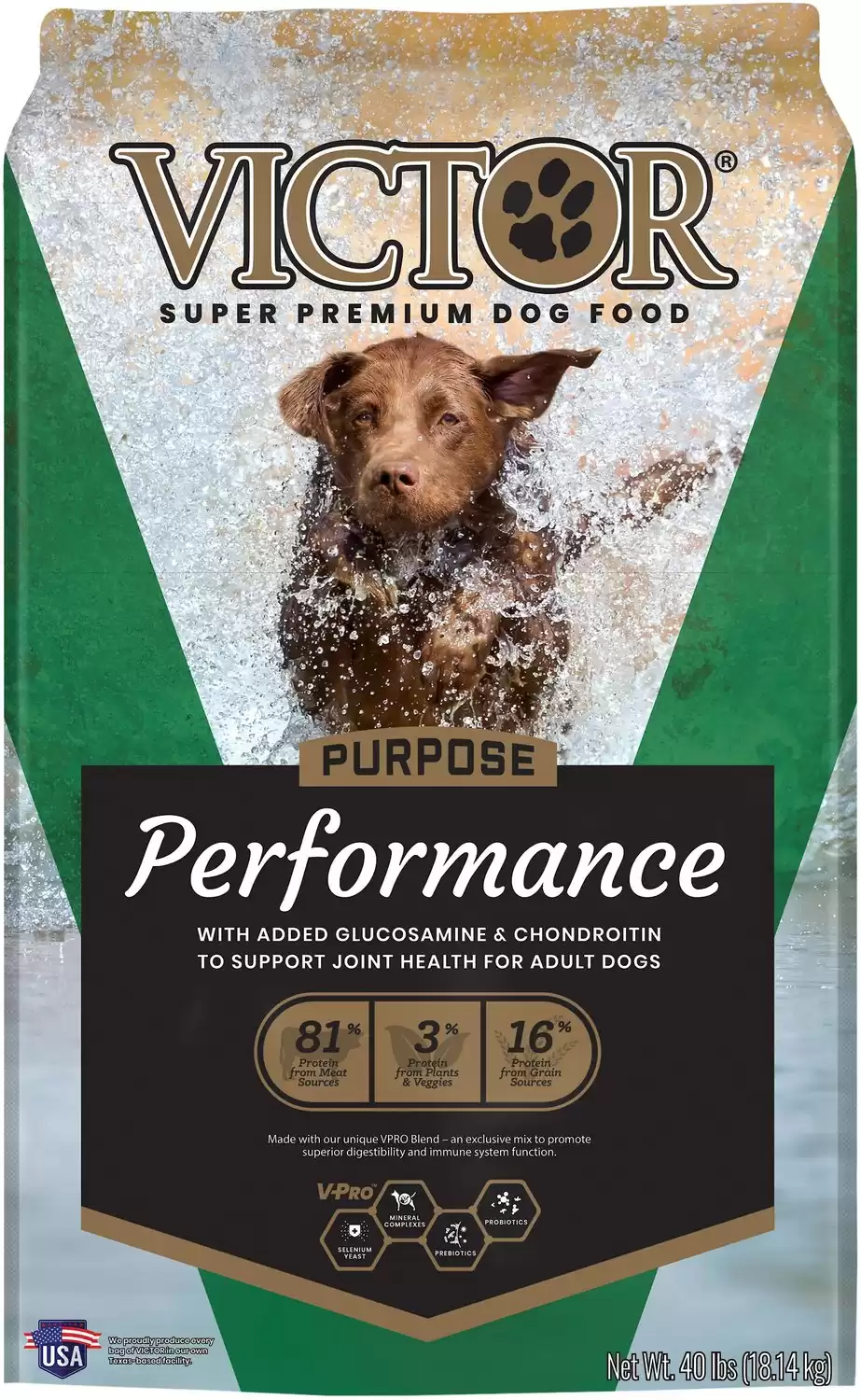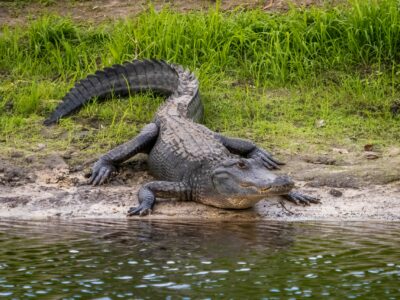Formosan Mountain Dog
Canis lupus
Formosa is the Portuguese term for the island of Taiwan
Advertisement
Formosan Mountain Dog Scientific Classification
- Kingdom
- Animalia
- Phylum
- Chordata
- Class
- Mammalia
- Order
- Carnivora
- Family
- Canidae
- Genus
- Canis
- Scientific Name
- Canis lupus
Read our Complete Guide to Classification of Animals.
Formosan Mountain Dog Conservation Status
Formosan Mountain Dog Facts
- Name Of Young
- Puppy
- Fun Fact
- Formosa is the Portuguese term for the island of Taiwan
- Temperament
- Loyal, intelligent, and protective
- Litter Size
- 10-12 puppies
Formosan Mountain Dog as a Pet:
- General Health
- Energy Level
- Shedability
- Trainability
- Intelligence
- Tendency to Chew
- Size
- Family and kid friendliness
- Yappiness / Barking
- Moderate
- Separation Anxiety
- Moderate
- Preferred Temperature
- Average climate
- Exercise Needs
- High
- Friendly With Other Dogs
- Moderate
- Pure bred cost to own
- $1,000+
- Dog group
- Working
- Male weight
- - lbs
- Female weight
- - lbs
This post may contain affiliate links to our partners like Chewy, Amazon, and others. Purchasing through these helps us further the A-Z Animals mission to educate about the world's species.
View all of the Formosan Mountain Dog images!
One of the more interesting facts is that this breed existed on Taiwan before the arrival of people, which could make it one of the oldest and most primitive breeds in the world. Primitive in this case simply means that it still retains ancient characteristics.
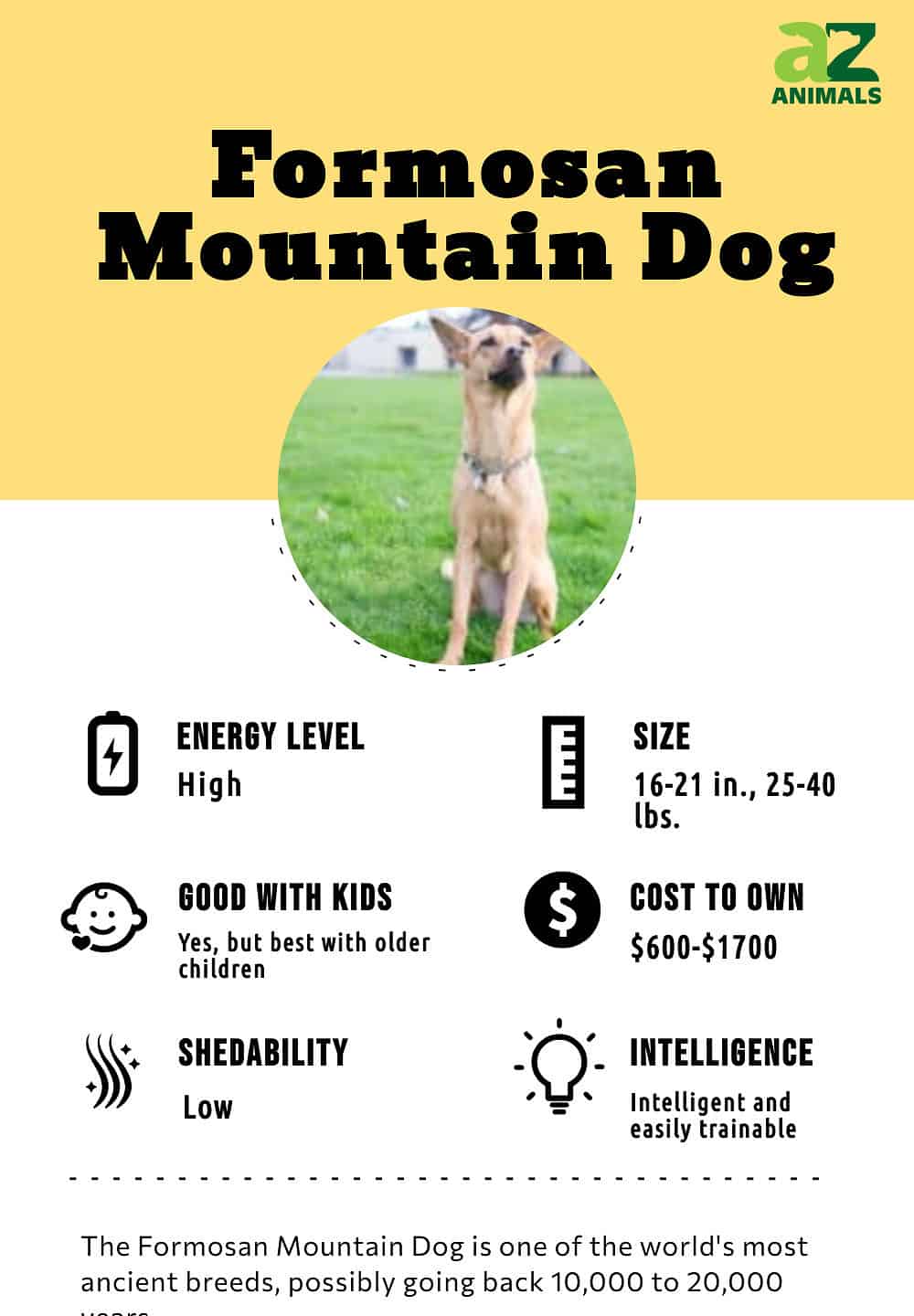
The Formosan Mountain Dog, also known simply as the Taiwan Dog, is an ancient, “primitive” breed. Many facts about its origins are still unknown, but it possibly descended thousands of years ago from South Asian hunting dogs. It has historically played many different roles as a hunter, a guard dog, a rescue dog, and a companion. While this breed was probably a semi-wild dog, roaming as it wished around the Taiwanese countryside, it would often accompany its owners on hunts for boar and other game while providing protection and security.
See all of our expert product reviews.
In the 1970s, attempts were made to formalize it into a definitive breed. This proved to be a difficult task given how much it had already mixed with German Shepherds and other types of dogs following the Japanese occupation in World War II. Many modern dogs still share this mixed ancestry. As of 2017, the American Kennel Club has accepted this breed into its Foundation Stock Service, which nurtures and provides support for this breed so it may eventually achieve full recognition.
The Formosan Mountain Dog is sometimes classified with other primitive breeds, but it’s unique in several respects. It is characterized by an athletic body, a slim waist, a big chest, a triangular face and ears, and a thin, curved tail that can reach over the back. The smooth and oily coat usually comes in a mix of black, white, yellow-brown, or brindle. The tongue is also apparently spotted.
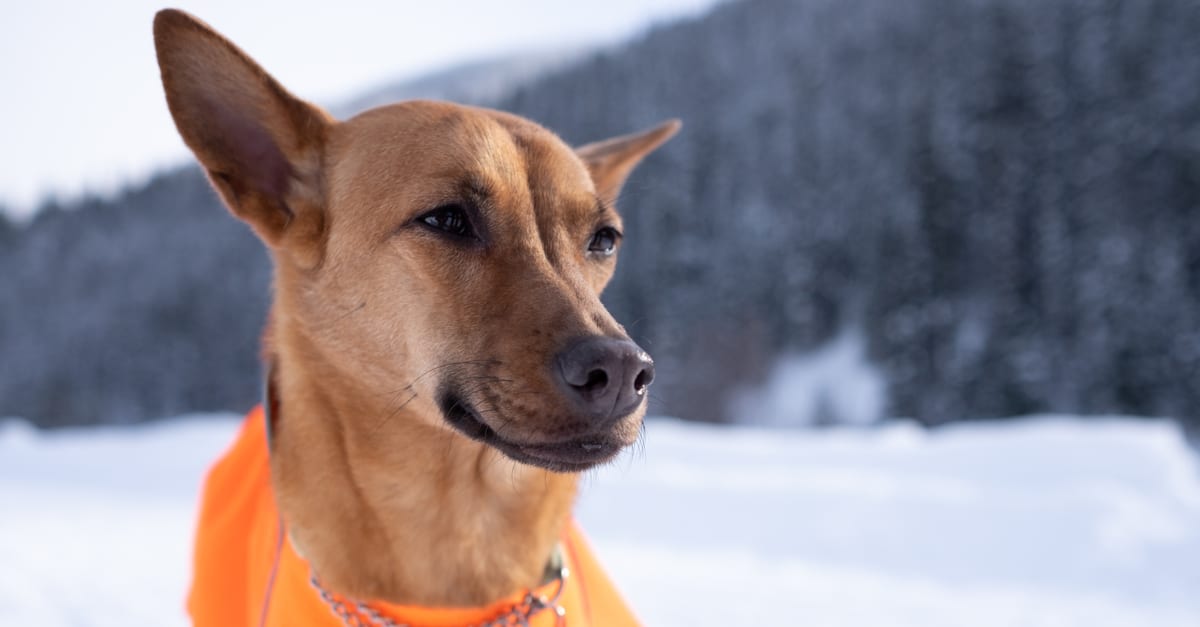
The Formosan mountain dog is loyal, protective, intelligent, hard-working, versatile and from an ancient breed.
©Sophia Yip/Shutterstock.com
3 Pros and Cons of Ownership
| Pros | Cons |
|---|---|
| Loyal and Protective: This breed makes for a great guard dog. | Wary of Strangers: This makes it a good guard dog, but if you want a social dog, then it’s not the right breed for you. |
| Intelligent and Trainable: This dog is eager to learn and grasps commands quickly. | Needs Plenty of Exercise: This breed does best with highly active owners. It likes running, hiking, and swimming. |
| Hard-working and Versatile: The Formosan Mountain Dog can do lots of different tasks. | Tendency to Become Bored: If left alone without any activities or games, this breed can easily turn destructive. |
Size and Weight
The Formosan Mountain Dog is a medium-sized breed in both weight and shoulder height. Males and females are very similar in size.
Health and Entertainment for your Formosan Mountain Dog
See all of our expert product reviews.
| Height (Male): | 17 to 20 inches |
| Height (Female): | 17 to 20 inches |
| Weight (Male): | 26 to 40 pounds |
| Weight (Female): | 26 to 40 pounds |
Common Health Issues
The Formosan Mountain Dog is a very healthy breed with a typical lifespan of 10 to 13 years. They suffer from few health issues besides cancer, cataracts, and progressive retinal atrophy. They can also suffer from a developmental disorder called dysplasia in which the elbow or hip joint can become displaced from its socket. To improve your dog’s quality of life, finding the right breeder is crucial. All dogs should be certified by specialists that they’re free of eye and joint problems. Regular appointments at the vet are also important to catch health issues early. In summation, these are the most common health problems with this breed:
- Cataracts
- Progressive retinal atrophy
- Cancer
- Hip and elbow dysplasia
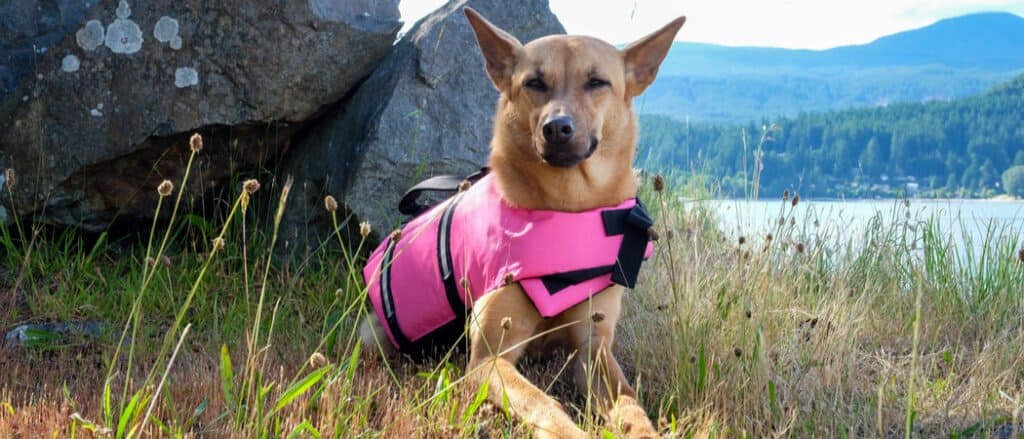
This Formosan Mountain Dog is from the island of Taiwan, so it wears a life vest when traveling by boat.
©Sophia Yip/Shutterstock.com
Temperament
The Formosan Mountain Dog has the eager personality of a hunter or guard dog. It is very physical, high-energy, fearless, and exuberant when it has a task to do. It is super affectionate and loyal around family members and tends to bond very strongly with a single person. However, this breed is also very protective of its family and might not tolerate the presence of strangers.
Keenly alert and aware of its surroundings, the dog tends to bark loudly as a warning when a stranger approaches the home. If it becomes particularly aggressive, then it can do a little nipping or biting. Fortunately, with enough early training and socialization, this breed can be taught to remain comfortable and calm in the presence of other people. This breed will also need frequent activity to satisfy its mental and physical needs, or else it might engage in destructive behavior. It loves many activities, including games, exercise, hiking, fetching, and swimming.
Care
While the Formosan Mountain Dog is in many respects easy to care for, this breed will probably require the guidance of an experienced dog owner to help navigate it through the training process. If you don’t know what you’re doing, then this breed may develop some bad behaviors and habits. The dog can adapt reasonably well to apartment living, but it does need plenty of space nearby to exercise.
Best Dog Food
This dog will need a few cups of high-quality dog food per day; the amount ultimately depends on its size and energy requirements. Owners should carefully watch its weight and try to limit its calories as necessary to prevent obesity. Try to find a dog food that matches the unique health concerns and nutritional needs of this breed.
Considering the breed’s health profile, A-Z Animals recommends Victor Purpose – Performance, Dry Dog Food as the best dog food for Formosan Mountain Dogs.
That’s because of the targeted, complete nutrition in this hearty beef recipe that covers all the breed’s potential conditions. For example, there’s plenty of glucosamine and chondroitin to protect the joints. Also, there’s taurine for eye health and immune-supporting L-carnitine, probiotics, and amino acids.
Check out Victor Purpose Performance Dog Food on Chewy and Amazon.
- 81% meat protein with premium-quality beef, chicken and pork meals
- Ideal for sporting pups and those with high physical demands
- Contains glucosamine and chondroitin for long-term joint health
- Fortified with vitamins, minerals, essential fatty acids, protein and amino acids
- Promotes digestion and immune health
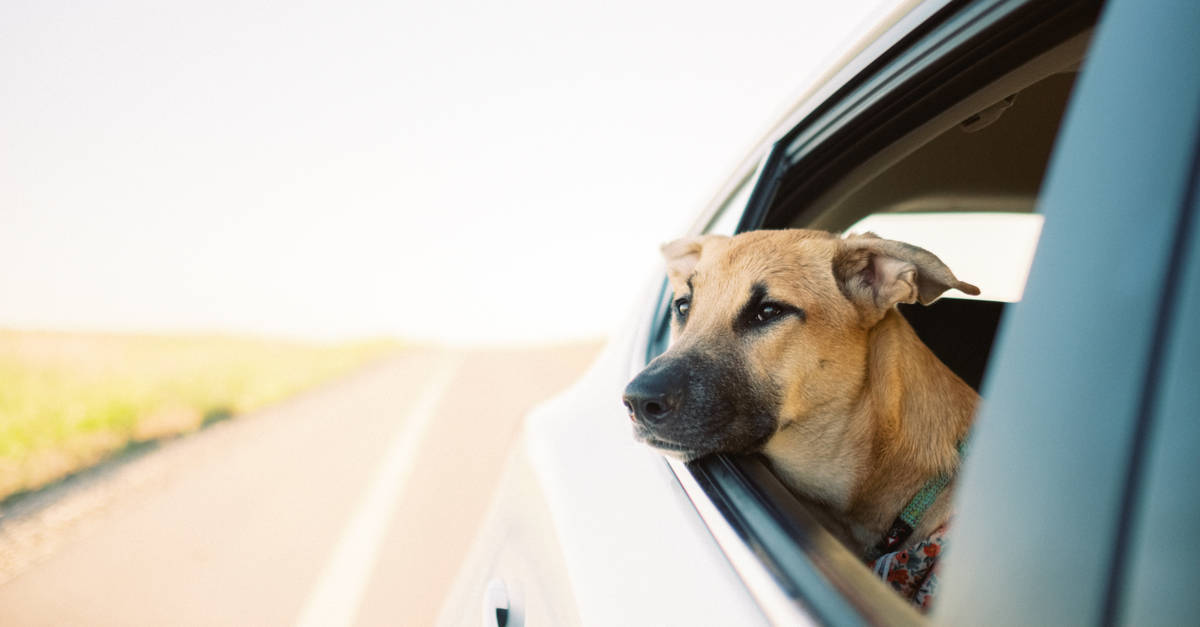
The Formosan mountain dog thrives best when it’s treated as an equal partner by its owner and tends to bond strongly to one person.
©Wirestock Creators/Shutterstock.com
Maintenance and Grooming
The Formosan Mountain Dog, fortunately, doesn’t do too much shedding. It should require minimal grooming outside of weekly brushing and the occasional bath to remove loose hair, dirt, and debris. Other aspects of its care will require a little more time. The nails will need to be trimmed regularly, perhaps once a month, with a clipper or grinder to prevent cracking and splitting. The ears should be checked as well for signs of infection or obstructions. The teeth will need to be brushed often with a suitable plan approved by your vet.
Training
Intelligent and eager to learn, the Formosan Mountain Dog is a highly trainable breed that thrives best when it’s treated as an equal partner by its owner. Commands need to be clear, consistent, and firm but don’t press too hard or treat them harshly. Positive reinforcement methods work well.
Exercise
The Formosan Mountain Dog will probably require at least an hour of exercise every day. It should be taken on walks several times a day and spend at least some time running free in a backyard, preferably with a fence around it. This breed particularly enjoys new activities and games, including hide-and-seek, fetching, tricks, swimming, hiking, and catch.
Puppies
Early training and socialization are an absolute necessity to mold your puppy into a well-behaved adult. A poorly trained member of this breed can become fearful and aggressive when it’s presented with new situations. This situation can sometimes result in unwanted nipping or biting. Classes, daycare, and other socialization opportunities are highly recommended to teach your puppy proper manners around unfamiliar faces.
Crate training also works well to reduce housebreaking and behavioral issues. Once your puppy is acclimated to its new home, the crate should serve as a safe space throughout the dog’s entire life.
Children
The Formosan Mountain Dog should get along fairly well with children of all ages, especially if they’re raised together in the same home from an early age. However, it does best with older children who know how to properly handle and care for a sensitive dog. You should teach your children proper etiquette when approaching a dog and supervise all interactions with younger children. Nipping should not be tolerated and, fortunately, doesn’t occur with a well-trained dog.
Similar Dogs
- Shiba Inu: Independent, bold, fearless, and spirited, this Japanese hunting dog has achieved Internet fame with its strange, quirky behavior and very expressive face. It is characterized by a dense double coat with red, black, tan, and cream colors.
- Hokkaido: Also known as the Ainu, this is another medium-sized Japanese hunting dog with a big personality. Like the Shiba Inu, it is known for its bravery, fearlessness, and very expressive face. The breed is characterized by a dense coat of red, white, black, brindle, and other colors.
- Akita: This spitz type breed hails from the mountainous regions of northern Japan. An excellent guard or working dog, it is just as wary and aloof with strangers as it is friendly and loyal toward family. Weighing up to 130 pounds, it has immense strength to back up its bark.
Famous
Unfortunately, there aren’t too many famous examples of the Formosan Mountain Dog. It is not very well-known outside of its native country.
Popular Names for the Formosan Mountain Dog
If you’re still struggling to come up with a good name, then you should consider one of the following:
- Moxi
- Rocky
- Lingyan
- Hunter
- Mulan
- Chen
- Ji
- Ai
- Lee
- Mei
Formosan Mountain Dog FAQs (Frequently Asked Questions)
What is a Formosan Mountain Dog?
The Formosan Mountain Dog, also known as the Taiwan Dog, is an ancient working breed from Taiwan. Although some facts about its origins are shrouded in mystery, this breed has historically played many roles as a hunter, guardian, rescue dog, and companion. Its temperament is energetic, versatile, and hard-working; it’s shy and reserved around strangers but affectionate and loyal toward family. This is a very healthy breed with a typical lifespan of nine to 13 years. Keep in mind that modern versions of this dog, especially outside of its native Taiwan, may have some mixed ancestry.
How can I find a Formosan Mountain Dog?
Your best bet is to get in touch with a registered breeder through the American Kennel Club or the Taiwan Dog Club of America. Some rescues may also take in this breed as well. Make sure they have all the proper paperwork and health records in order first.
Are Formosan Mountain Dogs good family dogs?
This breed is quite affectionate and loyal toward members of its family. However, it does better with adults and older children than younger kids. That doesn’t mean it behaves badly around younger children, but bonding isn’t a sure thing either.
Do Formosan Mountain Dogs shed?
This breed will do a fair amount of shedding. However, it’s easily cleaned up with weekly brushing.
How big is a Formosan Mountain Dog?
This breed will usually grow between 17 and 20 inches at the shoulders.
How much should a Formosan Mountain Dog weigh?
The accepted weight for this breed is normally between 26 and 40 pounds. If your adult dog weighs less, it could be a sign of a problem.
Are Formosan Mountain Dogs hypoallergenic?
While individual reactions will always vary, this breed is not considered to be hypoallergenic. Allergy sufferers should be wary.
Is a Formosan Mountain Dog considered aggressive?
This breed can become a little aggressive if it feels annoyed or distressed. That is why early socialization and training are absolutely essential. With enough practice, it is possible to minimize its fear of strangers and possibly even eliminate all aggression.
Thank you for reading! Have some feedback for us? Contact the AZ Animals editorial team.
Sources
- American Kennel Club, Available here: https://www.akc.org/dog-breeds/taiwan-dog/






